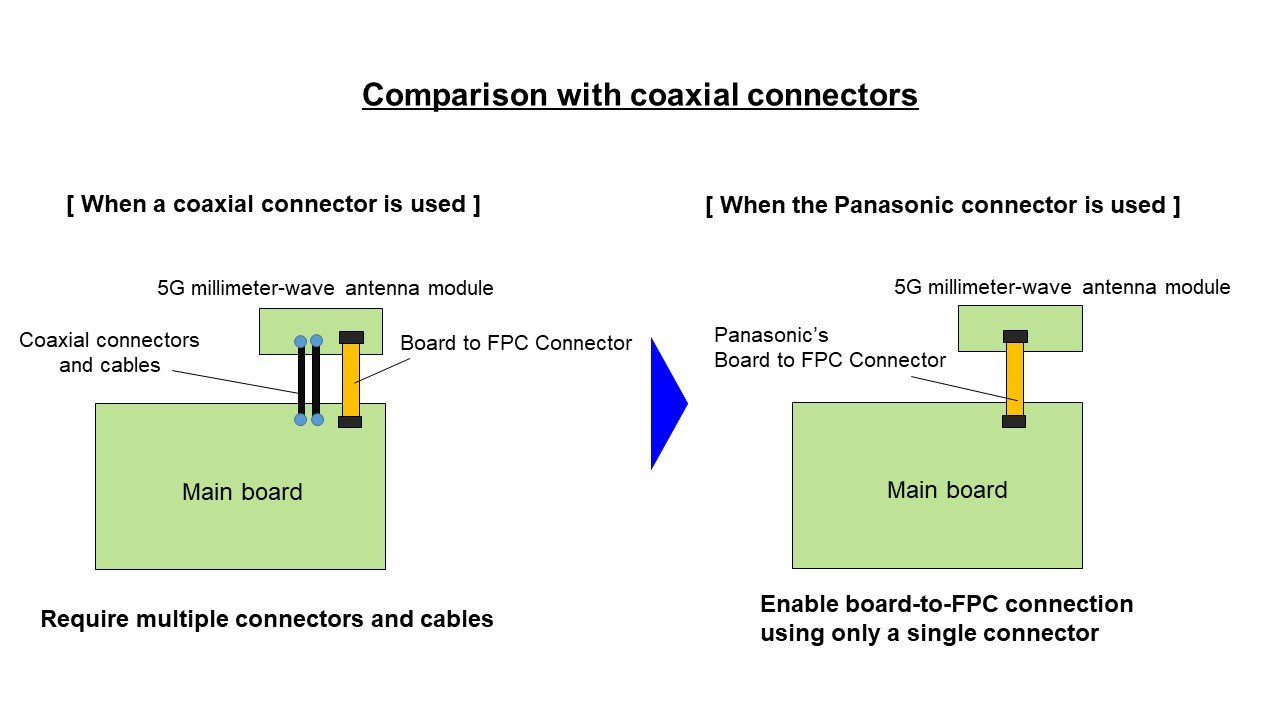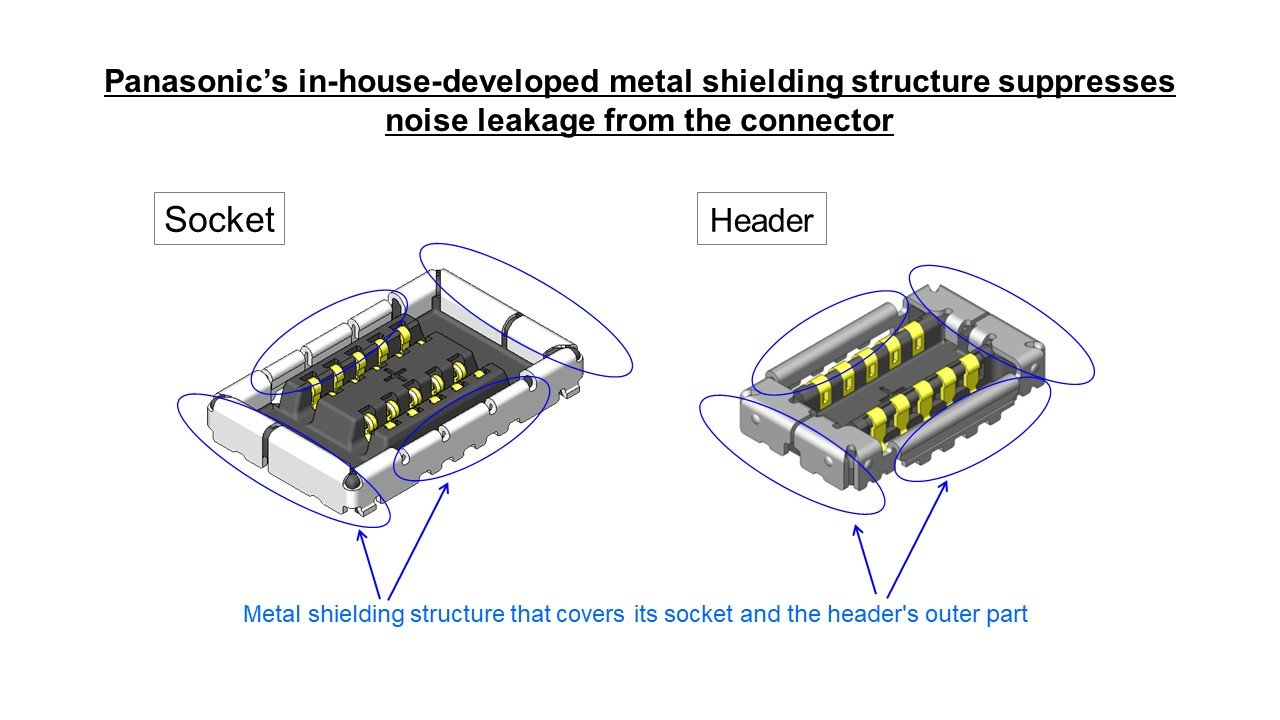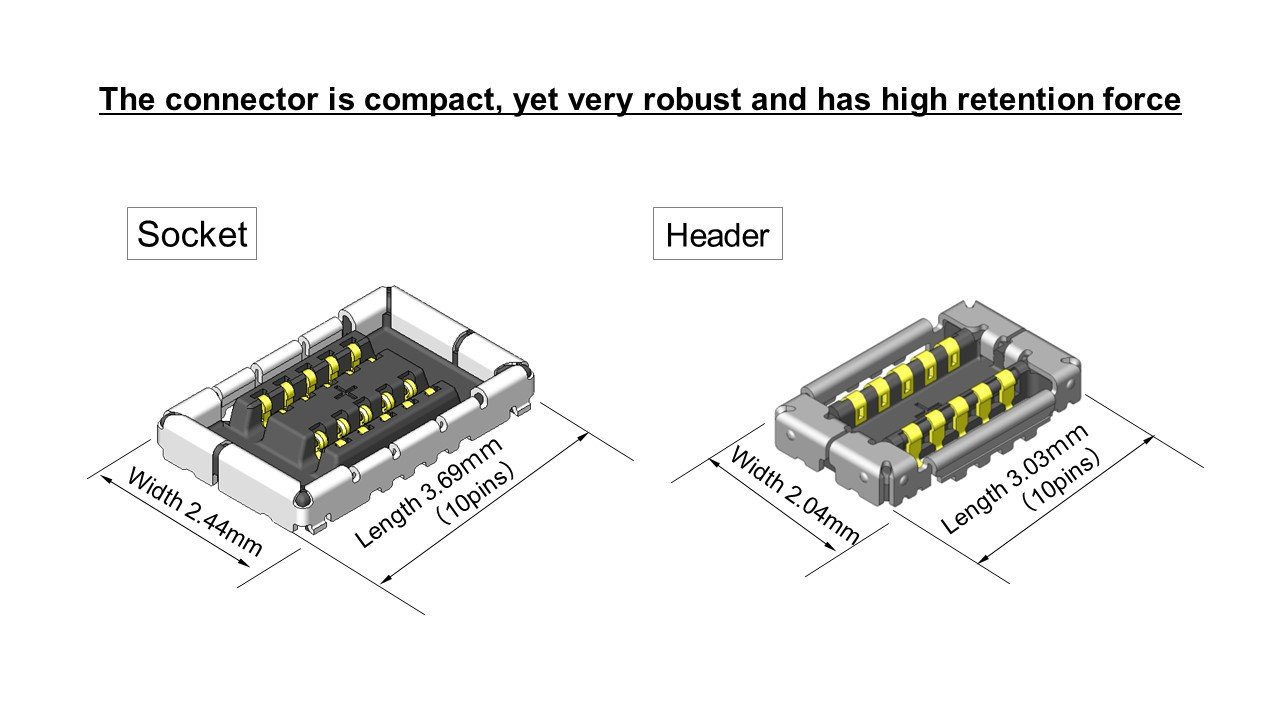Panasonic Corporation announced that start shipping samples of a Board to FPC (Flexible Printed Circuit) Connector for 5G (Fifth Generation Mobile Communications System) millimeter-wave antenna modules in May 2020.
With the launch of 5G mobile communication services, further technological innovation is expected, including the achievement of greater capacity and higher transmission speeds for data communications as well as the simultaneous connection of multiple devices. Demand for communications devices that use the 5G millimeter-wave spectrum (28 GHz band) is therefore anticipated to expand. Panasonic has developed a Board to FPC Connector for antenna modules that achieves reliable transmission of millimeter-wave signals in communications devices. This product enables stable communications when running millimeter-wave communication applications and can be expected to contribute to the widespread uptake of millimeter-wave communication devices.
Product features
- The simultaneous transmission of multiple high frequency signals enables simplified circuit designs and improves ease of assembly.
- The product solves communication interference and reduced communication speeds caused by noise, thereby allowing stable communications.
- The connector is compact, yet very robust and has high retention force, which improves the reliability of the devices it is installed in.
Details of the features
-
- The simultaneous transmission of multiple high frequency signals enables simplified circuit designs and improves ease of assembly.Although millimeter-wave signals have the advantages of high capacity and high data speeds, they have strong linearity, which makes them prone to blockage by obstacles. To implement communications in high-frequency bands such as millimeter-waves, it is necessary to incorporate multiple antenna modules into a single device. The use of conventional coaxial connectors for such applications requires multiple connectors and cables, requiring painstaking assembly. Applying Panasonic’s in-house-developed high frequency analysis technology to this product, however, enables board-to-FPC connection using only a single connector that simultaneously carries multiple high frequency signals. This enables simplified circuit designs and improved ease of assembly for achieving greater data capacity and higher transmission speeds in data communications.

-
- The product solves communication interference and reduced communication speeds caused by noise, thereby allowing stable communications.To achieve a stable communications environment for the efficient use of 5G millimeter-wave spectrum, enhanced noise prevention is required for antenna module connectors. This product employs a metal shielding structure that covers its socket and the header’s outer part that improves EMI/EMS characteristics [2] and solves problems caused by noise, including interference and slower communication speeds. As a result, the connector provides the reliability needed for running 5G millimeter-wave communication applications.

-
- The connector is compact, yet very robust and has high retention force, which improves the reliability of the devices it is installed in.It achieves high robustness and retention force by the addition of metal shielding to its outer part in addition to the use of Panasonic’s unique Tough Contact structure [3]. Despite its compactness, the connector provides excellent resistance to drop impacts and vibration. FPCs that use liquid crystal polymer (LCP) as a base material for high frequency transmission are stiffer and harder than FPCs using generic polyimide base materials. Conventional FPC connectors therefore tend to drop off due to the stress generated between FPCs and connectors. However, this product features a structure that prevent drop off even when connected to FPCs that use LCP base materials, further enhancing device reliability.



